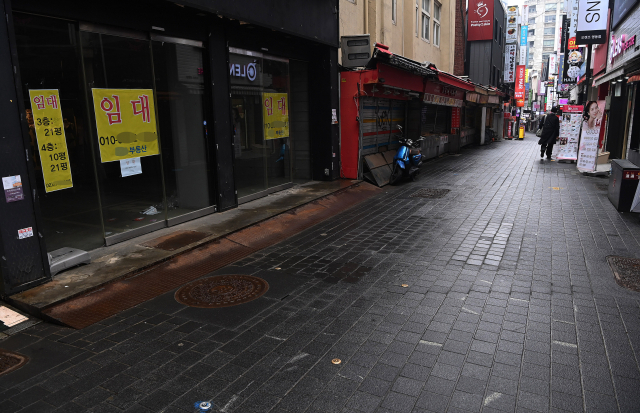Last year’s annual growth rate -1.0%, the third negative
Unstable state leaned on government finances and semiconductor exports
Private consumption only recovered 93% from the level before the coronavirus
 viewer
viewer
Last year, Korea’s real gross domestic product (GDP) growth rate recorded -1.0%, recording negative growth for the first time in 22 years. This is the third time that the Korean economy has grown negatively since 1980 (-1.6%) during the oil crisis and 1998 (-5.1%) when the foreign exchange crisis occurred. Both private consumption and exports were shocked by the novel coronavirus infection (Corona 19), but the government barely survived as the government increased fiscal spending.
The Bank of Korea announced on the 26th that last year’s annual real GDP fell by 1.0% compared to the previous year to 1,830 trillion 5802 billion won (based on the original series). The annual growth rate, which declined to 3.2% in 2017, 2.7% in 2018, and 2.0% in 2019, has finally stepped back. The BOK evaluated that the economic shock of Corona 19 was smaller than the foreign exchange crisis, but at a level similar to the global financial crisis. The growth rate for the fourth quarter from the fourth quarter of 2008 to the third quarter of 2009, when the global financial crisis occurred, was -1.0%.
The annual growth rate has improved slightly from the -1.1% forecast of the BOK’s survey bureau last November. This is because the growth rate in the fourth quarter recorded 1.1%, showing positive growth for the second consecutive quarter following the third quarter (2.1%). Despite the contraction in private consumption, the recovery in exports, mainly semiconductors and chemicals, helped. The export growth rate in the fourth quarter of last year was 2.1%, and the contribution to GDP growth in the fourth quarter was as high as 5.2 percentage points.
However, the domestic damage caused by Corona 19 is serious. Last year, the contribution of domestic demand to growth was -1.4 percentage points, which lowered the annual growth rate to negative. The contribution of private consumption to growth recorded -2.4 percentage points. Annual exports declined 2.5% year-on-year, showing the lowest growth rate in 31 years since 1989 (-3.7%).
By economic activity, both manufacturing and service industries turned negative last year. The manufacturing industry declined 1.0% year-on-year, the largest decline in 11 years since 2009 (-2.3%). The service industry recorded -1.2%, the worst level since 1998 (-2.4%). Looking at each economic entity, it looks like the government supported the shock that occurred in the private sector with four additional budget plans. Last year, the private sector’s contribution to the annual growth rate was -2 percentage points, while the government recorded 1 percentage points.
Han Eun diagnosed it as premature to escape from the Corona 19 shock. When looking at GDP in the fourth quarter of 2019 as 1, the GDP in the fourth quarter of last year was 0.99, which is less than before Corona 19. Private consumption is also worse than the first quarter of last year (0.94) at 0.93 in the fourth quarter of last year, as 1 in the fourth quarter of 2019. As the trend growth rate of the Korean economy is at the beginning of 2%, it is diagnosed that the recovery rate cannot be regarded as fast even if it records a recovery in the 3% range next year. Park Yang-soo, head of the Economic Statistics Bureau of the Bank of Korea, said, “The number of confirmed cases of the 3rd spread is greater than in the 1st or 2nd period, and the government’s social distancing has been strengthened, and private consumption continues to shrink considerably.”
Last year, the real gross domestic income (GNI) growth rate was -0.3%. The BOK predicted that the GNI per capita, which shows the standard of living for the people, will reach the $31,000 level, a slight decrease from $32,115 in 2019. We estimate the nominal growth rate at 0% and take into account the 1.2% rise in the won-dollar exchange rate.
/ Reporter Jo Ji-won [email protected]
< 저작권자 ⓒ 서울경제, 무단 전재 및 재배포 금지 >
